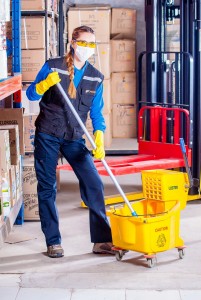


The Government have published guides to help businesses to open and work safely in regards to COVID-19. Some businesses may need more than one of the guides to ensure people are safe.
Looking through the guides they all offer similar solutions. Here we look at the top ten items to consider for your business in relation to the risk assessment.
We began the COVID-19 crisis light-heartedly washing our hands while singing a double rendition of ‘happy birthday’, but as the virus continues to hit hard, we find that hand hygiene remains front and centre. The science tells us adequate hand washing is effective but also simple, logical and cheap. It is difficult to imagine a reasonable excuse for an employer that fails in this respect.
While there have long been legal requirements to consult with employees, COVID-19 as a risk has grabbed the attention like few other hazards. The risk assessment reinforces the importance of worker input: ‘make sure you talk to your workers and their representatives to explain the measures you are taking. They can also provide valuable information on how you could control the risks’. Employers ignore this at their peril.
Social distancing is becoming an increasingly elastic concept; sometimes two metres, sometimes ‘one metre plus’ and differing throughout the UK. The document reminds employers that local rules may differ which highlights the importance of nationwide organisations remaining abreast of local updates and being agile and responsive to changes at short notice.
Virtually all jobs have changed in some way. Many of our new working practices are no doubt here to stay. There is a hint of this in the new document, which encourages the increased use of online meeting facilities, even when people are working in the same building.
Good ventilation is another basic control measure to reduce the risk. This is reflected in the risk assessment, which suggests propping open non-fire doors to improve air circulation, ushering in another important point: COVID-19 control measures should not adversely impact pre-existing safety regimes. Consider having the company fire risk assessment reviewed in light of these changes.
The document takes a huge step forward in identifying the detrimental impact of the pandemic on our collective mental health and well being. While the focus is on planning for those coming back into workplaces, huge numbers are still working from home and the importance of contact, time management and fatigue are among the hazards highlighted.
Thinking about those remote workers, the assessment also highlights the musculoskeletal disorders risked by lengthy DSE use at home. The HSE maintains that ‘there is no increased risk for people working at home temporarily’ but there is no question that this pandemic is testing the bounds of what ‘temporarily’ really means.
The all-encompassing task facing employers is laid bare by the need to identify those within the workforce who are vulnerable or clinically extremely vulnerable. The suggested control measures include an in house individual assessment of these employees and a discussion to identify what is needed in each case. Consider management and HR (If applicable) reviews.
Once again we see the attempt to stretch health and safety law beyond its typical boundaries. In identifying occasions when social distancing may be difficult, employers’ control measures are said to include the provision of facilities to keep people from public transport and creating working cohorts of those who already travel to work together.
The very last point, face coverings. These are ‘not required to be worn in the workplace’ but ‘where people choose to wear them you should support them’. The government guidance for those in close contact sectors such as hairdressing now requires the wearing of visors to ‘provide a barrier between the wearer and the client from respiratory droplets caused by sneezing, coughing or speaking’. Of course face coverings are also now mandatory on public transport too. Logically there is an acceptance that simple barriers (not PPE) have a part to play in reducing the transmission risk and a more sweeping change in the existing non-committal position feels almost inevitable.
Contact us if you require further information.
Keep safe!
(This blog was correct at time of release)

The World Health Organization (WHO) has published new advice for the public on when and how to wear masks safely.
The guidance covers fabric masks and medical masks, describing who should wear what type of mask and when.
Face coverings have become mandatory in some shops and supermarkets in England. In terms of the law, in England, people are required to wear face coverings:
Some key points for fabric masks include the following.
In addition, the WHO has advised the public of the following Don’ts with regard to fabric masks.
Don’t use a mask that looks damaged.
Don’t wear a loose mask.
Don’t wear your mask under the nose.
Don’t remove the mask where there are people within a metre.
Don’t use a mask that is difficult to breathe through.
Don’t wear a dirty or wet mask.
Don’t share your mask with others.
With thanks to The World Health Organization (WHO)
Contact us if you want to discuss Covid-19 risk assessments, social distancing signage or hand sanitiser.
Stay Safe!
 Why should we pay attention to housekeeping at work?
Why should we pay attention to housekeeping at work?Effective housekeeping can eliminate some workplace hazards and help get a job done safely and properly. Poor housekeeping can frequently contribute to accidents by hiding hazards that cause injuries. If the sight of paper, debris, clutter and spills is accepted as normal, then other more serious health and safety hazards may be taken for granted.
Housekeeping is not just cleanliness. It includes keeping work areas neat and orderly; maintaining halls and floors free of slip and trip hazards; and removing of waste materials (e.g., paper, cardboard) and other fire hazards from work areas. It also requires paying attention to important details such as the layout of the whole workplace, aisle marking, the adequacy of storage facilities, and maintenance. Good housekeeping is also a basic part of accident and fire prevention.
Effective housekeeping is an ongoing operation. By keeping the work area consistently tidy can show the company are serious about keeping employees and others safe. Periodic “panic” clean ups are costly and ineffective in reducing accidents.
Poor housekeeping can be a cause of accidents, such as:
To avoid these hazards, a workplace must “maintain” order throughout the working day.
Effective housekeeping results in:
A good housekeeping program plans and manages the orderly storage and movement of materials from point of entry to exit. The plan also ensures that work areas are not used as storage areas by having workers move materials to and from work areas as needed.
Housekeeping order is maintained not achieved. This means removing the inevitable messes that occur from time to time and not waiting until the end of the shift to reorganize and clean up. A good housekeeping program identifies and assigns responsibilities for the following:
Don’t forget places such as shelves, basements and boiler rooms that would otherwise be overlooked. The orderly arrangement of operations, tools, equipment and supplies is an important part of a good housekeeping program.
The final addition to any housekeeping program is inspection. It is the only way to check for deficiencies in the program so that changes can be made. Walker Health and Safety Services can carry out workplace inspection.
Contact Walker Health and Safety Services should you require further information.

The coronavirus (COVID-19) epidemic continues in the UK. As we move to the “recovery phase” or the “new normal” as it is often referred to, employers are expected to plan for the return to work of employees where they are not able to work from home.
The UK Government has published COVID-19 Secure working safely guidance for workplaces that provides a hierarchy of risk control measures that employers and the self-employed are expected to follow when reviewing their risk assessments for COVID-19 hazards.
“When managing the risk of COVID-19, additional PPE beyond what you usually wear is not beneficial. This is because COVID-19 is a different type of risk to the risks you normally face in a workplace, and needs to be managed through social distancing, hygiene and fixed teams or partnering, not through the use of PPE.
“Workplaces should not encourage the precautionary use of extra PPE to protect against COVID-19 outside clinical settings or when responding to a suspected or confirmed case of COVID-19.
“Unless you are in a situation where the risk of COVID-19 transmission is very high, your risk assessment should reflect the fact that the role of PPE in providing additional protection is extremely limited.
“However, if your risk assessment does show that PPE is required, then you must provide this PPE free of charge to workers who need it. Any PPE provided must fit properly.”
Note: Where an employer is required to provide PPE in relation to the mitigation of transmission risks from COVID-19, the requirements of the Personal Protective Equipment at Work Regulations 1992 will apply.
The UK Government has published a Coronavirus (COVID-19): Personal Protective Equipment (PPE) Plan. This contains guidance on who needs PPE, what type of PPE is required and in what circumstances. It states that PPE is “a precious resource and must be used only where there is a clinical need to do so”.
In summary, the guidance recommends that:
The guidance then states: “Beyond these roles, the current clinical evidence says there is not a widespread benefit from wearing PPE. Instead, the best way to protect yourself and others is to regularly wash your hands and to keep at least two metres between you and other people whenever you leave your house”.
The guidance on Cleaning of Non-healthcare Settings states the following.
“The minimum PPE to be worn for cleaning an area where a person with possible or confirmed coronavirus (COVID-19) has been is disposable gloves and an apron. Hands should be washed with soap and water for 20 seconds after all PPE has been removed.
“If a risk assessment of the setting indicates that a higher level of virus may be present (for example, where unwell individuals have slept such as a hotel room or boarding school dormitory) or there is visible contamination with body fluids, then the need for additional PPE to protect the cleaner’s eyes, mouth and nose might be necessary. The local Public Health England (PHE) Health Protection Team (HPT) can advise on this.
“Non-healthcare workers should be trained in the correct use of a surgical mask, to protect them against other people’s potentially infectious respiratory droplets when within 2 metres, and the mask use and supply of masks would need to be equivalent to that in healthcare environments.”
The Government’s COVID-19 Secure guidance states that covering the face may be “marginally beneficial as a precautionary measure”. The evidence indicates that wearing a face covering does not protect the wearer but may protect others if you are carrying the virus.
Face coverings are not a substitute for other forms of risk control in the workplace.
The guidance states: “Wearing a face covering is optional and is not required by law, including in the workplace. If you choose to wear one, it is important to use face coverings properly and wash your hands before putting them on and taking them off.”
Optional use includes on public transport and in some shops or other “enclosed spaces where social distancing is not always possible” and where individuals might come into contact with others that they do not normally meet.
If you require further information, on risk assessments for COVID-19 or any other topic, please contact us.
 1. Inspect the premises
1. Inspect the premisesIf the property has been left completely unattended, you may find unexpected pests, damage or breakages — all of which need to be addressed before employees begin to return.
Tests to run before the premises is reoccupied might include:
These will help you identify the additional control measures and adjustments that will need to be implemented. Look at our page for further information.
Risk assessments should be carried out in consultation with employees or trade unions and should be continually reviewed and adjusted. If you require a Covid-19 risk assessment please contact us.
Will the return to work be staggered? The priority will be those employees who can’t do their job fully from home. Are there others who could continue working from home for the foreseeable future? Don’t forget to continue to support homeworkers. https://www.hse.gov.uk/toolbox/workers/home.htm
Review workplaces before employees return to the company. The following may need to be considered….
If your company are going to deep clean before the premises opens, this should be stated in the risk assessment. regular cleaning should also be documented including who is responsible for certain tasks. Identify your cleaning needs (eg more frequent cleaning, regular disinfecting of surfaces, handles, keyboards, bannisters, lift buttons, photocopiers, etc) and confirm whether your existing cleaning contractor can fulfil them.
https://walkersafety.co.uk/2020/04/deep-cleaning-workplace-time-coronavirus/
Until a vaccine is available, the organisation will need to maintain a high level of hygiene. Government guidance says employers should provide handwashing facilities or hand sanitisers at entry and exit points.
Plant and machinery will need to be inspected for deterioration, etc. If employees have taken IT equipment, office furniture or other assets home with them you will need a plan to get them back to the workplace, sanitised and checked. If the risk assessment identifies the need for personal protective equipment (PPE) to prevent COVID-19 infection, ensure you purchase appropriate PPE.
It is worth involving staff in the planning process and you should keep communications channels open with staff, customers, suppliers and other stakeholders. Once you have a plan, it needs to be communicated carefully to all employees on the understanding that it will likely need to be adjusted as you go. Aim to give employees reasonable notice of a return to the workplace so that they can arrange childcare, investigate commuting options, etc. Your employees must be confident that you are not putting them at risk by asking them to return to work, so let them know the measures you are taking to keep them safe.
For further information, please contact us.